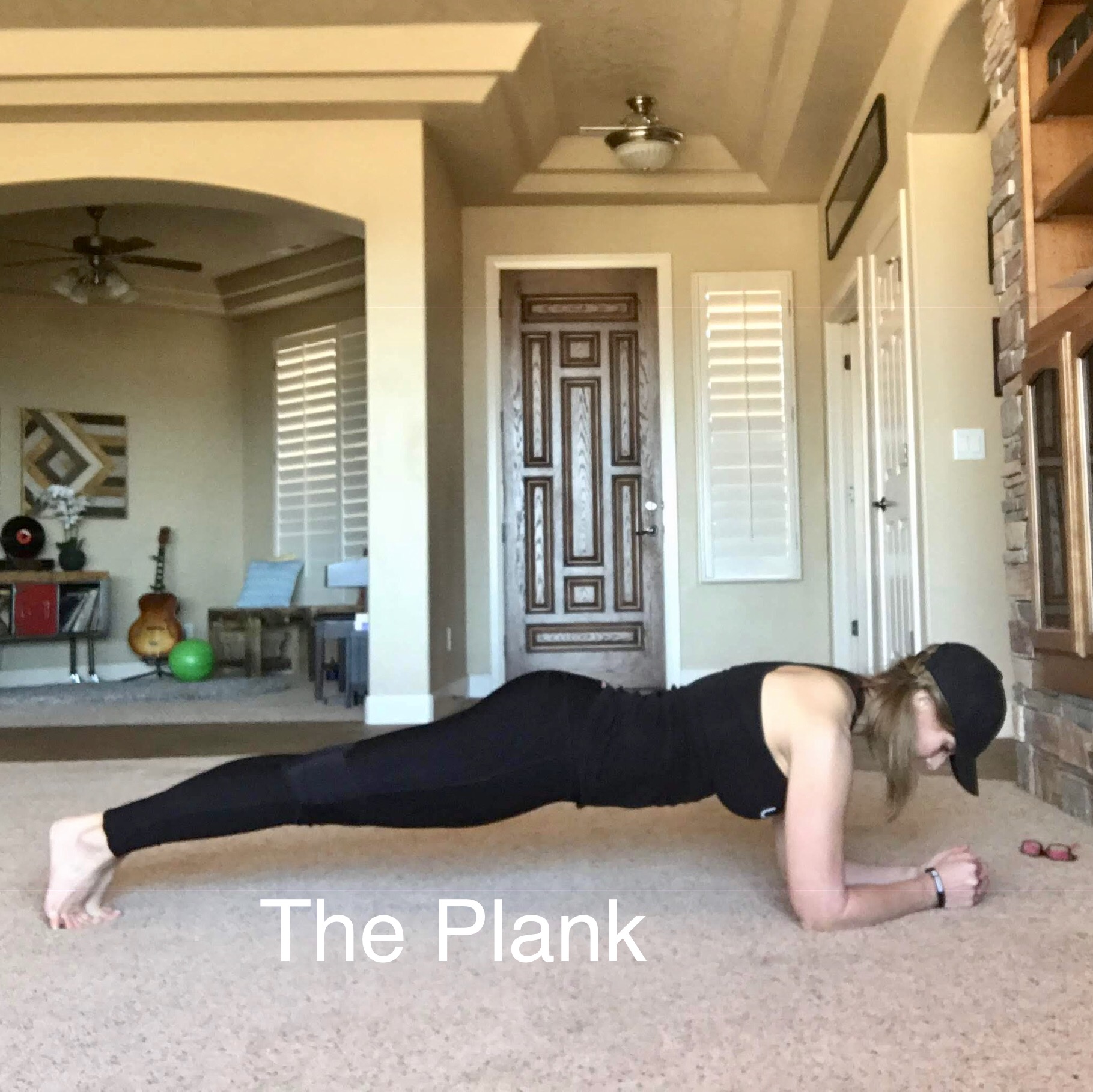Love ‘em or hate ‘em, planks are a staple in the fitness world. And for good reason: they challenge your entire body (particularly your core), they don’t require equipment, and almost anyone can do them. If you’re a beginner or have a lot of weight to lose, modify by placing your hands on a wall, a chair, or lowering your knee or knees gently to the floor.
What’s so great about planks?
Planks build core strength, promote balance, and encourage solid posture. And they’re an extremely “functional” exercise, which means that they mimic movement that we perform throughout the day. (So could that mean that when we’re standing, we’re in a moving plank? I think so!).
For the best plank possible, keep your neck long, pull in your belly, press back through your heels, and keep your hips in line with your torso. If you need to modify by lowering your knees, make sure to keep your hips down – it’s tempting for them to pop up.
Planks work all of your major muscle groups. You may feel it immediately in your core, but after about 10 seconds, your body starts to recruit supporting muscles to hold itself up. Some of the muscles you’ll use during plank: your shoulders, back, deep core muscles (transverse abdominal muscle) and even your legs.
How long should you do a plank?
If it’s your first time or if it’s been a while, I recommend to first see how long you can actually hold a plank with good form, then push yourself 3 more seconds. Then repeat 2x’s (total of 3 sets). Practice this often and your core will feel stronger in no time!! And you will be surprised how much stronger and longer you are able to go in a short period of time.
Change it up!
If for any chance you get bored with a standard plank, you can try some of the following variations:
- The saw. Maintain a plank position as you slowly move forward and back.
- Plank with leg lifts. Lift one leg off the floor (make sure to keep your hips parallel to the floor) and pulse your leg towards the ceiling 20 times, squeezing your glute to lift your leg. Switch sides.
- Rotating side plank. Rotating from a traditional plank to a side plank, then back to center, then side plank on the opposite side.
- Elbow lower and lifts. Start with a plank on your hands, then one at a time, lower your elbows to the floor. Keep your core pulled in as you press back up to your hands.
- Plank balance. This is a really challenging one! Try to keep your plank position (long and torso in one straight line) as you lift one hand off the floor. Once you regain balance, try lifting the opposite leg as well. Take a few deep breaths and repeat on the opposite side.
More planking tips:
- Make sure that you can keep your core supported and you’re taking deep breaths the entire time. If you feel like the exercise is causing you to push your core out and you don’t feel supported, that’s a great cue to modify.
- If you are newly postpartum, pregnant or suffer from a hernia, I recommend that you avoid planks. They can cause Intraabdominal pressure on the connective tissue. And too much pressure can contribute to diastasis recti, which is when the core muscles remain abnormally separated and that’s just weird and scary when that happens.
This week’s challenge
Give it a try! See how long you can do one plank with good form. Hold it a little longer to challenge yourself. Repeat two more times. Do this daily and see how much you can increase your plank time by the end of 7 days. I think you will be surprised!! If you get really daring, try this beginner 30-day challenge or scroll down to see the original challenge by Time in the Market.

Recent Comments